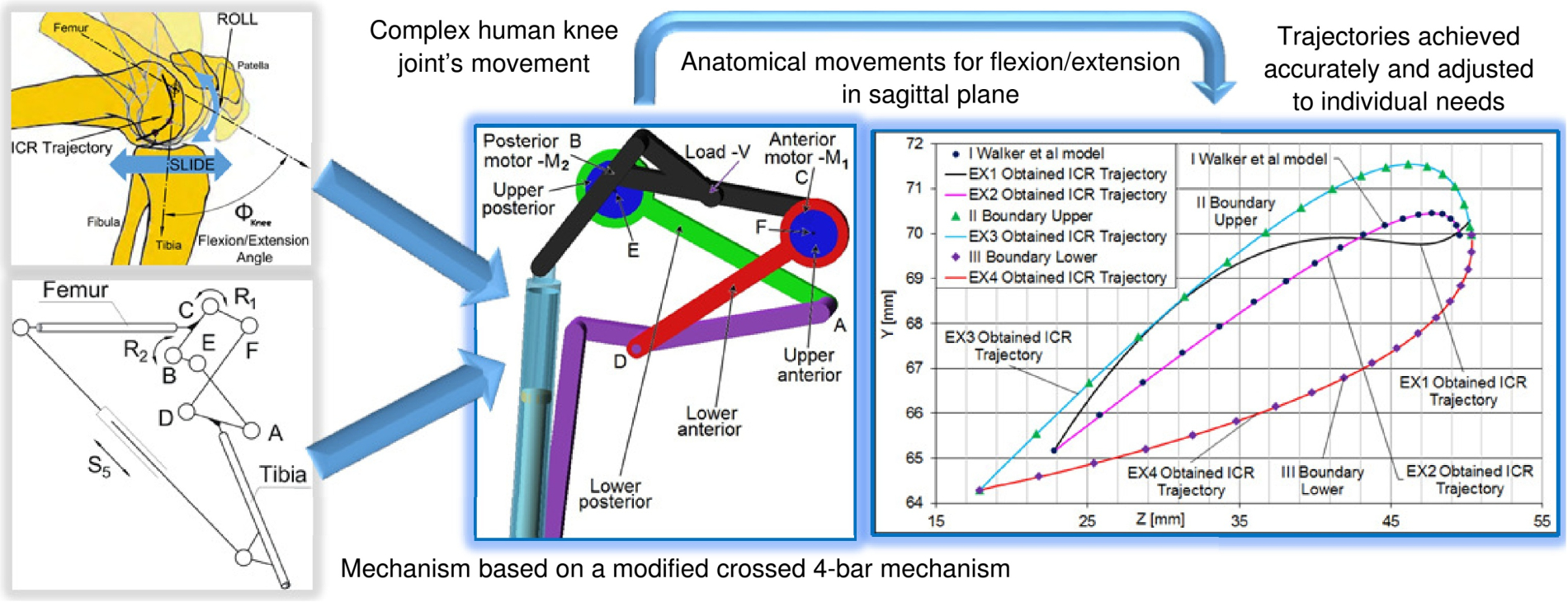Issues of biomechanics are one of the main areas in which the Mechatronics and Theory of Mechanisms Group conducts studies and research projects. Analysis of the mechanisms comprising the human body’s musculoskeletal system is the main topic of research interests. The aim is to acquire knowledge about the relationships and analogies between the kinematic pairs, which are the joints and muscle attachments, as well as between the rigid elements and the bones of the human body. As a result, it is possible to design ergonomic devices adjusted to the natural predispositions of the human body. In addition, this knowledge allows the development of advanced rehabilitation systems that support the regeneration and strengthening of injured or damaged limbs.
The paper focuses on the development of a new adjustable knee joint mechanism that can also be used as a device to assist in the rehabilitation of knee joint motion. The mechanism is synthesised and based on a crossed 4-bar linkage in order to reproduce the complex knee joint motion in terms of the flexion/extension movement in the sagittal plane with variable instantaneous centre of rotation (ICR) positions. The mechanism is modified by introducing two additional degrees of freedom, each one in the form of 2-link modules that are moved by rotational motors. Thus, a final new design of the knee joint mechanism is developed and a 3D dynamic model is formulated in ADAMS. Simulations are then conducted on the model in order to characterise the functioning of an optimal solution that considers the degree of compatibility between the trajectories of the ICR of a human reference knee joint and the ICR of the new mechanism. Numerical results are presented with regards to the mechanism’s main advantage, i.e. the possibility of achieving several trajectories. This enables the knee joint trajectory to be corrected step by step in real-time and to be adjusted to individual needs.
